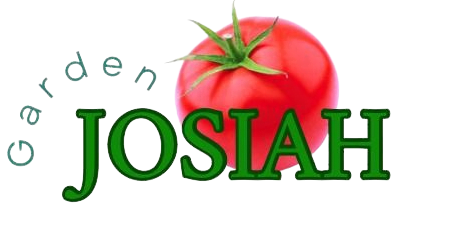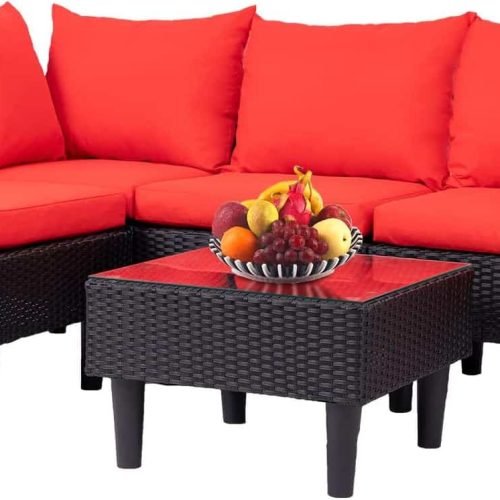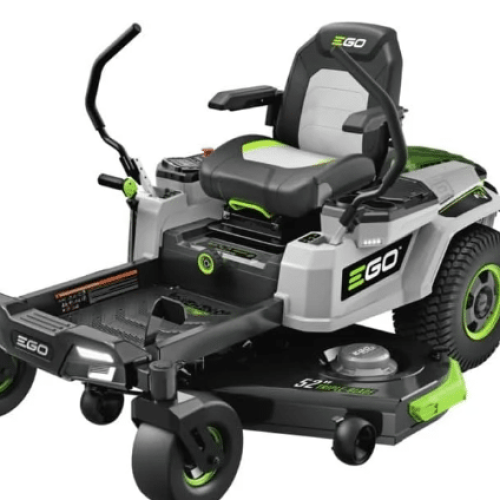Hey guys its JV Charles again!! As the sun dances across the vibrant greens at the farmer’s market, I feel excitement. This is the time when the earth’s love shines. I’m eager to make a salad that is truely special!. Enter the delectable microgreens salad – a dish that delights and nourishes. You guys are gonna love em!
In our fast-paced world, we often overlook simple pleasures like a well-crafted salad. But this microgreens masterpiece is not ordinary. It’s a mix of flavors, textures, and health benefits that will make you want more. With just a few minutes of preparation, you’ll have a salad that looks great and is full of vitamins, minerals, and antioxidants.
Key Takeaways
- Microgreens are nutrient-dense greens that pack a powerful punch of flavor and nutrition.
- This microgreens salad features a variety of seasonal produce, including fresh peaches, avocado, and crunchy pecans.
- The homemade balsamic dressing is quick and easy to make, elevating the salad to new heights of deliciousness.
- Microgreens are versatile and can be grown at home, making them a sustainable and accessible superfood.
- This salad is a perfect balance of flavors and nutrients, suitable for a light lunch, side dish, or dinner.
What are Microgreens?
Microgreens are young, tender seedlings of vegetables and herbs. They are harvested when they are just a few inches tall. These greens are small but full of flavor and nutrients.
Nutrient-Dense Greens with Concentrated Flavor
Microgreens have more nutrients than their mature versions. A study by the University of Maryland and the USDA showed they can have up to 40 times more nutrients. This makes them a superfood and great for many dishes.
The flavors of microgreens vary from sweet to spicy. You can find broccoli, kale, radish, sunflower, and pea shoots among the popular types. Each has a unique taste and texture. They add a gourmet touch to salads, sandwiches, and more.
Microgreens are not only nutritious but also good for the planet. They use little water and produce chlorophyll. This makes them a great choice for gardeners and home-growers. They grow quickly, allowing for fast harvests and meeting the demand for these greens.
Looking to improve your salads or eat more nutrient-dense greens? Microgreens are a tasty and versatile choice. Their flavor and nutritional value are perfect for health-conscious eaters and gardeners.
Benefits of Microgreens Salad
Adding microgreens to your salad brings many health perks. These small greens are full of vitamins A, C, E, and K, plus minerals like iron and magnesium. They are also packed with antioxidants.
Microgreens boost your immune system, aid digestion, and lower the risk of chronic diseases. They are also low in calories but high in fiber. This makes them a great choice for a healthy salad.
Using microgreens in your salad makes for a tasty and healthy meal. They support your health and well-being. Plus, they are grown organically and locally, making them a green choice for your salad.
Microgreens as a Nutrient-Dense Superfood
- Microgreens may contain up to 40 times more nutrients than their mature counterparts.
- Fenugreek microgreens have been shown to improve glucose uptake in cells by 25-44%.
- Red cabbage microgreens can help reduce body weight, triglycerides, and LDL (bad) cholesterol when added to a high-fat diet.
- Brassicaceae microgreens, such as broccoli and kale, may possess cancer-preventive and -fighting properties.
- Lutein-rich microgreens, like spinach and dandelion, can help maintain and improve eye health.
| Nutrient | Amount in Lettuce Microgreens | Percentage of RDI |
|---|---|---|
| Vitamin K | 126 μg | 105% |
| Vitamin A | 370 μg | 41.11% |
| Vitamin C | 9.2 mg | 10.22% |
| Lutein + Zeaxanthin | 1740 μg | 28.83% |
| Manganese | 0.25 mg | 10.87% |
Adding microgreens to your salad makes it both nutritious and tasty. It supports your health and well-being.
“Microgreens are a nutritional powerhouse, packed with a wide array of essential vitamins, minerals, and antioxidants that can truly elevate the health benefits of any salad.”-JV Charles
Ingredients for the Microgreens Salad
Creating a delicious microgreens salad starts with picking the freshest, tastiest ingredients. At the core, we use vibrant microgreens like pea shoots, kale, and sunflower greens. These greens are packed with nutrients and flavors.
We add seasonal produce to enhance the salad. Fresh peaches, creamy avocado, crisp red onion, and tangy feta cheese are great choices. Toasted nuts, like almonds or walnuts, add a nice crunch.
Fresh and Flavorful Ingredients
For a memorable microgreens salad, choose the freshest, best ingredients. Using local, sustainable produce ensures every bite is full of flavor and nutrition.
- A mix of microgreens, such as pea shoots, kale, and sunflower microgreens
- Fresh, ripe peach slices
- Creamy avocado
- Crisp red onion
- Tangy feta cheese
- Toasted almonds or walnuts
We make a simple dressing with high-quality olive oil, balsamic vinegar, Dijon mustard, and maple syrup. This dressing brings all the flavors together, making the salad satisfying. Trust me on this!
| Ingredient | Quantity |
|---|---|
| Microgreens (pea shoots, kale, sunflower) | 2 cups |
| Fresh peach, sliced | 1 |
| Avocado, diced | 1 |
| Red onion, thinly sliced | 1/4 cup |
| Feta cheese, crumbled | 1/4 cup |
| Toasted almonds | 2 tablespoons |
| Olive oil | 2 tablespoons |
| Balsamic vinegar | 1 tablespoon |
| Dijon mustard | 1 teaspoon |
| Maple syrup | 1 teaspoon |
| Salt and pepper | To taste |
By picking and mixing these fresh, tasty ingredients, we make a microgreens salad that looks great and tastes amazing. It’s perfect for a light lunch or a side dish. This salad will surely please your taste buds.
Growing Your Own Microgreens
Growing your own microgreens is rewarding and easy. It ensures you always have fresh, nutrient-dense greens for salads and meals. You can grow them indoors or outdoors in a small space. This makes them perfect for city gardeners or those with little outdoor space. You’ll need a shallow tray, potting soil, and the seeds of your choice, like broccoli or kale.
After sowing the seeds, your microgreens will be ready in 10-14 days. This gives you a steady supply of fresh, tasty, and nutritious greens. Growing your own microgreens is a great way to eat healthy without spending a lot of money.
The Benefits of Growing Microgreens
Microgreens are full of vitamins, minerals, and antioxidants. They have 4 to 10 times more nutrients than regular greens. They are packed with Vitamins E, C, and K, and also have potassium, iron, zinc, magnesium, and copper.
Eating microgreens can lower the risk of heart disease, diabetes, cancer, and Alzheimer’s. This is because they are full of antioxidants and polyphenols.
Also, growing your own microgreens supports promote sustainable produce and urban gardening. It lets you cut down on your carbon footprint and feel proud of harvesting your own food.
- Microgreens are ready to harvest in about two weeks.
- Microgreens contain concentrated levels of essential vitamins and minerals.
- Eating microgreens can help reduce the risk of chronic diseases.
- Growing your own microgreens is a sustainable and cost-effective option.
To start growing your own microgreens, you’ll need a shallow tray, potting soil, and high-quality seeds. Spread the seeds evenly, cover them, and water them gently. Keep the soil moist, and in 10-14 days, you’ll have a lot of fresh, tasty microgreens.
“Microgreens are a fun and easy way to grow your own nutritious produce, even in a small space. They’re a game-changer for anyone looking to incorporate more sustainable and healthy ingredients into their diet.” -JV Charles
Whether you’re a pro at gardening or just starting, growing your own microgreens is rewarding. It lets you create your own urban gardening space and enjoy the perks of sustainable produce at home.
Microgreens Salad Recipes and Variations
Microgreens let us make many tasty and healthy salad recipes. We can go beyond the basic salad with peaches, avocado, and balsamic vinaigrette. There are many variations that highlight the unique tastes and textures of different microgreens.
A salad with radish microgreens, sliced radishes, toasted pecans, and lemon vinaigrette shows off radish microgreens’ spicy flavor. Or, try a salad with kale microgreens, roasted sweet potatoes, and maple-mustard dressing for a heartier taste.
We can also add microgreens to grain-based salads, like a quinoa salad with cucumber, feta, and various microgreens. The options are endless for making tasty and nutritious microgreens salads that fit our tastes and the season.
Microgreen & White Bean Salad
One top microgreens salad recipe is the Microgreen & White Bean Salad. It mixes olive oil, balsamic vinegar, salt, oregano, and parsley in a medium bowl. Then, add a 15-ounce can of cannellini beans, a thin red onion, and 1/2 cup of sun-dried tomatoes. Finish with roasted red bell pepper and 1 cup of microgreens for a salad that’s vibrant and tasty, ready in 10 minutes for six people.
Cucumber Tomato Microgreens Salad
The Cucumber Tomato Microgreens Salad is another great choice. It combines crisp cucumbers, juicy cherry tomatoes, and various microgreens. The salad is dressed with olive oil, balsamic vinegar, and honey for a perfect mix of flavors.
Microgreens Salad with Roasted Veggies
For a filling salad, try the Microgreens Salad with Roasted Veggies. It includes roasted sweet potatoes, baby carrots, and a mix of microgreens like mustard greens, kale, and arugula. The salad gets its sweet and deep flavor from a maple-mustard vinaigrette.
These are just a few ways to use microgreens in our salads. Whether you like a light salad or a hearty one, microgreens let us make dishes that are both tasty and beautiful. They suit our individual tastes and dietary needs.
Conclusion
Microgreens are a great way to add flavor and nutrition to any salad. They are packed with vitamins, minerals, and antioxidants. Adding them to our meals can make our microgreens salad more delicious and healthy.
We can grow our own microgreens or buy them from local markets. This opens up a world of possibilities for making tasty and healthy superfood salads. With their unique tastes and textures, like radish’s kick or basil’s sweetness, we can make salads that are just right for us.
Let’s keep exploring the world of microgreens. They offer amazing flavors and health benefits. By adding these greens to our meals, we can take care of our health and enjoy delicious food. The possibilities with microgreens salads are endless.
FAQ
What are microgreens?
Microgreens are young, tender seedlings of vegetables and herbs. They are harvested when they are just a few inches tall. These small plants are full of flavor and nutrients.
What are the health benefits of microgreens?
Microgreens are packed with vitamins, minerals, and antioxidants. They include vitamins A, C, E, and K, along with iron, calcium, and magnesium. These nutrients support immune health, aid digestion, and lower the risk of chronic diseases.
How can I grow my own microgreens?
Growing your own microgreens is rewarding and easy. You can do it indoors or outdoors in a small space. They are ready to harvest in just 10-14 days.
What are some delicious microgreens salad recipes?
Microgreens can be added to many tasty salads. Try the classic mix with peaches, avocado, and balsamic vinaigrette. Or, experiment with different microgreens and seasonal fruits and vegetables.
How do I choose the best microgreens for my salad?
There are many microgreens to choose from, like broccoli, kale, radish, sunflower, and pea shoots. Pick the ones you like best or mix them for a unique taste and texture that goes well with your salad.
Source Links
- https://yummyaddiction.com/microgreen-salad/ – Microgreen Salad with Peaches & Avocado – Fresh, Light, and Healthy!
- https://www.bootstrapfarmer.com/blogs/microgreens/sweet-savory-balsamic-microgreens-salad – SWEET & SAVORY BALSAMIC MICROGREENS SALAD – Bootstrap Farmer
- https://www.cleaneatingkitchen.com/microgreens-salad/ – Microgreens Salad with Lemon Vinaigrette
- https://www.marthastewart.com/8297647/microgreens-and-how-to-use-them – Microgreens Are Small in Size but Big on Flavor and Nutrition—Here’s How to Use Them in Your Cooking
- https://rootsy.org/microgreen-salads/ – How to Make Microgreen Salads – a recipe for filling in seasonal eating gaps
- https://atlurbanfarms.com/product/microgreens-basic-salad-mix/ – Microgreens, Basic Salad Mix – ATL Urban Farms
- https://health.clevelandclinic.org/benefits-of-microgreens – The Big Nutritional Value of Microgreens
- https://www.webmd.com/diet/what-to-know-about-microgreens – What to Know About Microgreens
- https://microgreensworld.com/lettuce-microgreens-nutrition/ – The Hidden Health Treasures of Lettuce Microgreens
- https://cre8athome.com/caprese-salad-with-microgreens/ – Caprese Salad With Microgreens – Cre8 at Home
- https://www.nithaskitchen.com/2020/09/asian-microgreen-salad.html – Asian Microgreens Vegetable Salad Recipe – Nitha Kitchen
- https://www.urbancultivator.net/summer-microgreen-recipes/ – 8 Microgreen Dishes to Celebrate the Best of Summer – Urban Cultivator
- https://herbivoreskitchen.com/2022/05/how-to-grow-microgreens-at-home/ – How to Grow Microgreens at Home
- https://www.foodgardenlife.com/learn/grow-microgreens – Guide: How to Grow Microgreens at Home (Easy, Inexpensive, Delicious!) — Food Garden Life: Edible Garden, Vegetable Garden, Edible Landscaping
- https://culturesforhealth.com/blogs/learn/sprouting-how-to-grow-sandwich-and-salad-microgreens – How To Grow Sandwich And Salad Microgreens – Cultures For Health
- https://www.bootstrapfarmer.com/blogs/microgreens/microgreen-white-bean-salad – Microgreen & White Bean Salad – Bootstrap Farmer
- https://thenovicechefblog.com/cucumber-tomato-salad/ – Cucumber Tomato Salad | A Light & Refreshing Salad Recipe!
- https://www.givinggreens.com.au/5-scrumptious-salad-recipes-featuring-microgreens-to-impress-your-mates/ – 5 Scrumptious Salad Recipes Featuring Microgreens to Impress Your Mates – Giving Greens
- https://www.ncbi.nlm.nih.gov/pmc/articles/PMC9864543/ – Microgreens—A Comprehensive Review of Bioactive Molecules and Health Benefits
- https://www.peoplesfarm.com/post/elevating-salads-boosting-flavor-and-nutrition-with-microgreens – 5 Salad Recipes with Microgreens for Your Healthy Diet
- https://www.sdnbvc.edu.in/wp-content/uploads/2023/01/PAPERID-6.pdf – PDF






